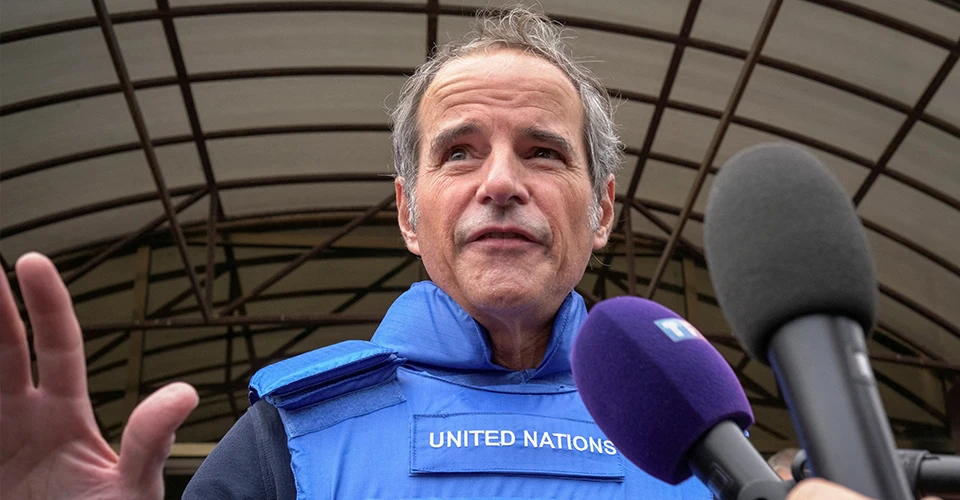
Zaporizhzhia TPP water level drops rapidly after Kakhovka HPP dam explosion, IAEA experts need wider access to verify data — Grossi
Experts are worried about the quick decrease in the water level at the Zaporizhzhia TPP due to the explosion of the Kakhovka HPP. The International Atomic Energy Agency (IAEA) is asking for permission to access the Zaporizhzhia nuclear power plant to check the differences in water level data caused by the damaged Kakhovka dam, which is responsible for cooling the reactors.
This was stated by IAEA Director General Rafael Grossi.
Grossi noted that the water level in the Kakhovka reservoir is rapidly falling after the dam downstream was damaged on June 6. However, the day before, ZNPP reported that the water level at the entrance of Zaporizhzhia TPP (ZTPP) remained stable for about a day.
According to the data the IAEA experts received at ZNPP, on June 11, the water level at Zaporizhzhia TPP was 11.27 meters, compared to almost 17 meters before the dam was destroyed. Meanwhile, the level continues to decrease in other parts of the reservoir. This could result in a difference of approximately 2 meters compared to the level reported by the TPP.
"It is possible that this discrepancy in the measured levels is caused by an isolated body of water separated from the larger body of the reservoir. But we will only be able to know when we gain access to the thermal power plant," added the IAEA director general.
The cooling reservoir of the ZNPP and the outlet channel of the ZTPP are crucial for the continuous supply of cooling water. Grossi emphasized that maintaining their integrity is essential for the safety of the plant.
"The thermal power plant plays a crucial role in ensuring the safety of the nuclear power plant just a few kilometers away. I fully expect that our experts will soon have the opportunity to go there and assess the situation on-site. I will personally address this important matter with the Zaporizhzhia nuclear power plant," he stated.
It is also reported that the Director General of the IAEA will travel to Kyiv and ZNPP next week. He mentioned that the IAEA requires access to the power distribution station of the ZNPP.
The IAEA's response to the explosion of the Kakhovka HPP
On June 6, Volodymyr Zelenskyy discussed the consequences of the Kakhovka HPP explosion and the risks for the ZNPP with the head of the IAEA and invited him to Ukraine. In response, Grossi stated that he would lead the organization's next mission to the ZNPP after the hydroelectric power plant was blown up by Russia.
Raffael Grossi later expressed concern that in two days, the ZNPP would no longer be able to receive water for cooling from the Kakhovka HPP reservoir. On June 8, the water level in the Kakhovka Reservoir dropped by 2.8 meters to 14.03 meters, and the rate of loss slowed down to 5-7 cm/h. Grossi added that if the water level falls below 12.7 meters, the Zaporizhzhia Nuclear Power Plant will no longer be able to extract water from the reservoir for the site.
On June 9, it was noted that based on preliminary conclusions from IAEA experts, the Zaporizhzhia NPP should be able to pump water from the reservoir to cool the reactors even after the level drops below the critical 12.7 meters. At the same time, Director General Grossi announced an aid program for Ukraine in response to the flooding of the dam in Nova Kakhovka.
- News













































